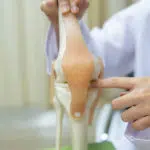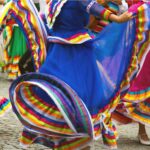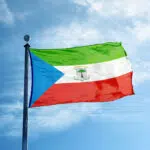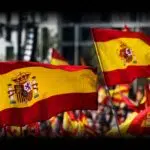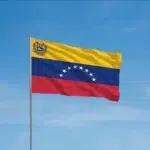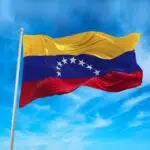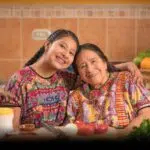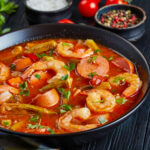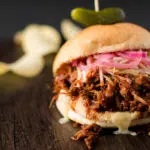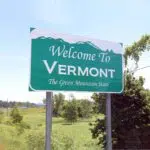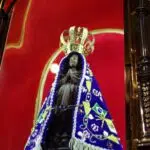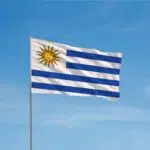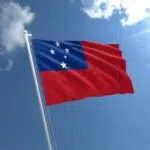Indigenous Resistance Day in Venezuela is celebrated every October 12 to honor the heroes of anti-Spanish resistance and appreciate Venezuelan indigenous cultures and history. Did you know that the Norse were the first to step foot in the Americas and establish a settlement? Venezuela, officially known as the Bolivarian Republic of Venezuela, is a country on the northern coast of South America. It consists of 23 states, including the Capital District and federal dependencies covering Venezuela’s offshore islands. Indigenous Resistance Day in Venezuela was previously Día de la Raza — Day of the Race — which is synonymous with Columbus Day. But that didn’t sit well with the locals and was changed to the latter in 2002.
History of Indigenous Resistance Day in Venezuela
Before the arrival of the Spanish conquistadors, present-day Venezuela was inhabited by indigenous American Indian people, including tribes such as Kalina, Caquetio, Mariche, Timoto-Ciucas, and Auaké. These indigenous people numbered up to one million and were primarily agriculturists and hunters at their peak. Among them, the Timoto-Cuica society was the most advanced, with pre-planned permanent villages, stone and wood housing, terraced fields, and water storage facilities. They also produced anthropomorphic ceramics and spun vegetable fibers for textiles and mats.
In 1498, Christopher Columbus embarked on his third voyage to the Americas, sailing along the eastern coast of Venezuela. During this expedition, he discovered the “Pearl Islands” of Cubagua and Margarita off the northeastern coast of Venezuela. In 1499, Alonso de Ojeda led a second Spanish expedition to South America, sailing along the continent’s northern coast. Seeing the similarity between the Gulf of Venezuela and Venice, Ojeda decided to name it “Venezuela,” meaning little Venice in Spanish.
Between 1508 and 1531, the Spanish led other expeditions to Cubagua and Margarita, exploiting its pearl oysters and enslaving the local indigenous population. In 1522, the Spanish began the colonization of mainland Venezuela, building the first permanent South American settlement in present-day Cumaná. Several indigenous tribal leaders, such as Guaicaipuro and Tamanaco, led efforts to stop the Spanish conquest, only to be eventually subdued by the Spaniards.
In 1632, the Spanish opened gold mines at Yaracuy. They put the indigenous population through forced labor and imported enslaved people from Africa. In the 18th century, the Spanish created a second Venezuelan society along the coast. Cocoa plantations were established, and a larger population of enslaved Africans were imported to operate them. In 1717, the Province of Venezuela fell under the control of the Viceroyalty of New Granada. It later became the Captaincy General of Venezuela in 1777.
On July 5, 1811, seven of the ten provinces of the Captaincy General of Venezuela declared their independence. In 1812, the First Republic of Venezuela fell due to the 1812 Caracas earthquake and the Battle of La Victoria. In 1813, Simón Bolívar retook Venezuela and established the Second Republic of Venezuela. In 1821, Venezuela gained independence from Spain, forming the Republic of Gran Colombia with present-day Colombia, Panama, and Ecuador. In 1830, Venezuela finally achieved complete sovereign autonomy.
Indigenous Resistance Day in Venezuela timeline
Christopher Columbus reaches the eastern coast of Venezuela on his third voyage to the Americas.
Sailing along the northern coast of South America, Alonso de Ojeda decides to give the Gulf of Venezuela the name “Venezuela.”
The Spanish establish their first permanent settlement in South America in present-day Cumaná.
Venezuela becomes a fully sovereign country after separating from the Republic of Gran Colombia.
Indigenous Resistance Day in Venezuela FAQs
What is Indigenous Resistance Day in Venezuela?
Indigenous Resistance Day celebrates the efforts of America’s original inhabitants against colonization and recognizes their cultural and human diversity.
How was Día de la Raza celebrated in Venezuela?
Día de la Raza was previously celebrated with events such as bullfights, parades, dances, and fiestas. But the day has since been replaced with Indigenous Resistance Day in Venezuela.
What is Venezuela known for?
Venezuela is known for its biodiversity, diverse natural scenery, and petroleum industry — it has the largest known oil reserves in the world.
How to Observe Indigenous Resistance Day in Venezuela
Learn about Venezuela's indigenous culture
Indigenous Resistance Day in Venezuela highlights the struggle of the original inhabitants of America and their efforts toward liberation. Use this day to learn about their roots, role in slowing down the Spanish conquest, and socio-economic state today. These indigenous people include Wayuu, Piaroa, Pemon, Yanomami, Baré, and Mariche.
Pay them a visit
It would be even better if you can visit Venezuela and spend the day there. Why not take that trip you’ve been planning? Make Venezuela the destination of your next vacation!
Try a Venezuelan cuisine
Venezuela has delicious local dishes you should definitely give a taste. Examples include the national dish, Pabellón criollo and Pisca Andina. Some of these foods have simple recipes and are easy to cook at home. If you’re too busy, you can check a nearby restaurant for Venezuelan food.
5 Facts About Venezuela
Top Miss World winners
Venezuela has provided the highest number of Miss World winners — six.
World’s Largest Rodent
The Capybara, the world’s largest rodent, is native to Venezuelan savannas.
Endless lightning storms
The Catatumbo lightning, a unique atmospheric phenomenon, generates about 1.2 million lightning strikes a year.
The Virgin Mary
The Monument to Our Lady of Peace or Monumento a la Virgen de La Paz is the world’s highest statue of the Virgin Mary.
Cheapest place to buy fuel
Due to the heavy government subsidy, petrol only costs about $0.022 per liter in Venezuela.
Why Indigenous Resistance Day in Venezuela is Important
Indigenous culture and history
During the years of Spanish colonization, different native tribes resisted the invasion, losing their lives in the fight for liberation. Indigenous Resistance Day in Venezuela honors the sacrifices of these tribes. It also places value on indigenous culture and history’s impact on the country.
National unity
Indigenous Resistance Day in Venezuela is an opportunity for Venezuelan people to connect under the one goal of fighting for Venezuela’s freedom. That’s certainly reason enough to celebrate on this day!
Bonds
Families come together and people travel to cultural sites in Venezuela to commemorate the day. All kinds of bonds are showcased.
Indigenous Resistance Day in Venezuela dates
| Year | Date | Day |
|---|---|---|
| 2025 | October 12 | Sunday |
| 2026 | October 12 | Monday |
| 2027 | October 12 | Tuesday |
| 2028 | October 12 | Thursday |
| 2029 | October 12 | Friday |


